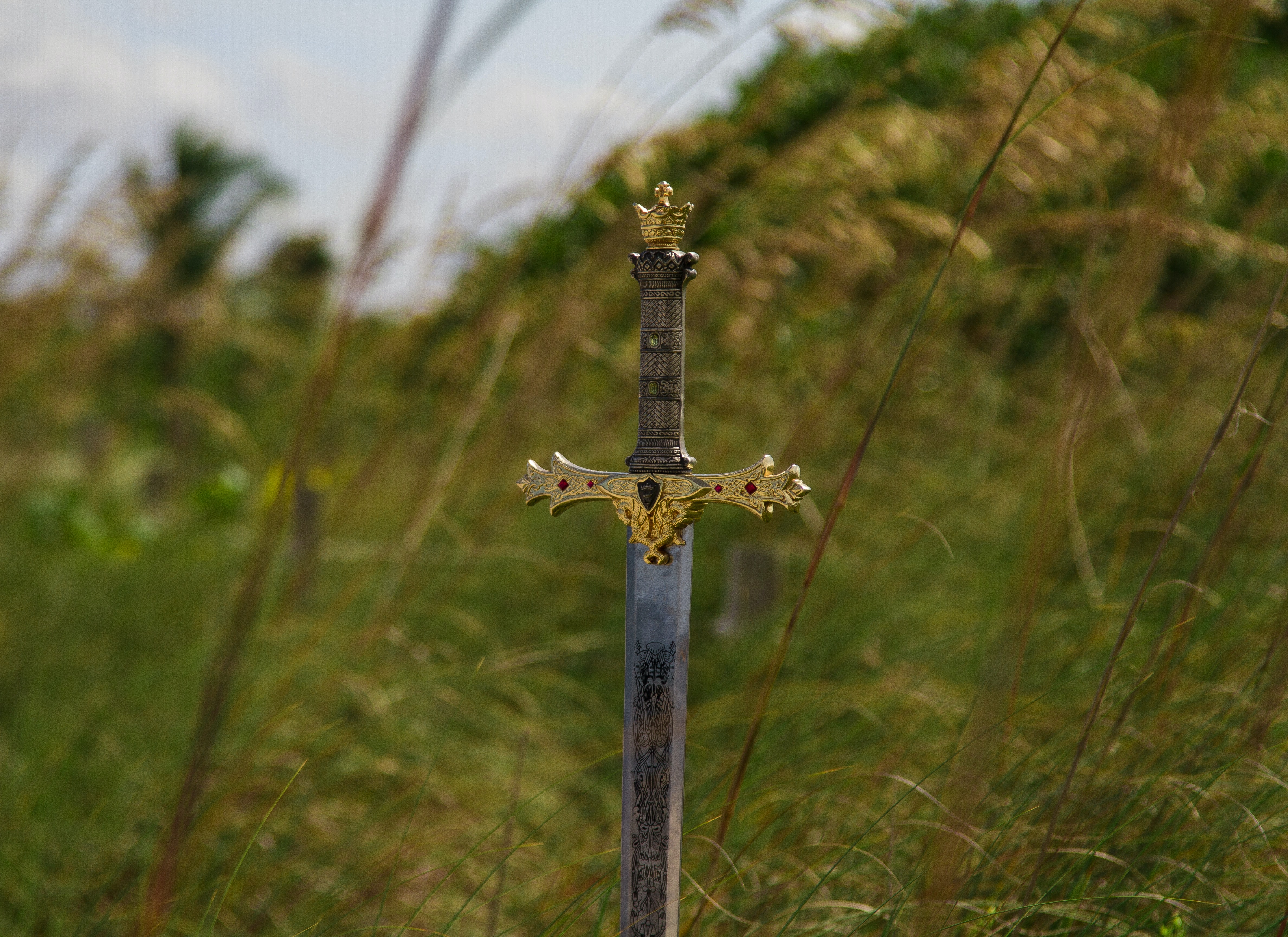Sword
A class of bladed weapons intended for slashing or thrusting that is longer than a knife or dagger, consisting of a long blade attached to a hilt.
As for the overall shape of the blade, this will generally differ depending on whether the sword will be used to slash, stab, or chop. Some designs manage to accommodate both slash and stab, though swords capable of performing all three functions are rare and usually impractical. There are four basic sword designs, no matter where in the world you're looking:
Cruciform swords are generally characterized by a symmetrical profile and straight edges leading up to a central point, this blade shape is capable of both cutting and thrusting. As basic swords, they tend to be flatter in cross section (and thus more flexible) and broader toward the point than dedicated thrusting swords in order to maintain cutting ability, but lack the curvature of slicing swords and are narrower toward the point than chopping ones so that they can still line up and execute a stab. Some designs emphasize either cutting or thrusting at the expense of the other.
Curved swords generally have a single sharpened edge that curves toward the tip of the blade. Though some types have blades that end in a point that can be used to stab, curved swords are primarily designed for slashing. If you're planning to fight from horseback, a curved sword is your best bet. Curved swords are easier to use on horseback because the curvature of the blade makes the vector of force diagonal to the cutting edge, imparting a slicing motion that makes sword strokes cleaner and more efficient. They're also easier to unsheathe while horseback, since the drawing motion more closely follows the movement of your elbow. The word "sabre"/"saber" is occasionally used as a generic name for this category of swords.
Swords designed for chopping will typically be single-edged and have most of the weight and mass toward the top third of the blade. They sometimes curve forwards, but not always. Much like an axe, a chopping sword is designed for cleaving: it has a edge designed to deliver the vector of force behind a blow directly into the surface, which will either buckle or split apart if it yields. Against unprotected flesh, this will usually result in very nasty wounds. Such blades can easily remove limbs, and are also ideal for execution by beheading. As is the case with a regular axe, swords with chopping blades may often be employed or even intentionally designed as tools for purposes like chopping wood or hacking through brush.
Finally, there are swords that specialize in stabbing. These tend to have narrow blades with a geometric cross-section — triangular, diamond, or even hexagonal — and seem to resemble very large needles. Sometimes they have cutting edges so that you can cut with them if necessary (and to deter an opponent from grabbing the blade), but sometimes they don't; their point of balance is way back in the hilt, which makes for faster thrusting and more precise point control, but drastically lowers the power of a slashing attack. Some thrusting swords such as rapiers were generally meant for use in a civilian context, and were still plenty capable of inflicting vicious cutting wounds. Meanwhile, estoc-type blades with a thickened triangular or diamond cross-section tended to focus on anti-armor use at the expense of the edges, and tended to have minimal cutting ability.
Mechanics & Inner Workings
The sword consists of the blade and the hilt. The term scabbard applies to the cover for the sword blade when not in use.
Hilts incorporate a grip and often a guard, which prevents the hand of the wielder from slipping onto the blade and may be used to parry an opponent's blade. The exact shape of the guard can vary wildly from weapon to weapon.
many swords have a pommel, which is the knob on the other end of the hilt. This pommel is often weighted to counterbalance the blade; it also has something to do with how the sword is built.
Generally the blade has a tail on the end, a tang, around which the hilt is constructed.





Comments